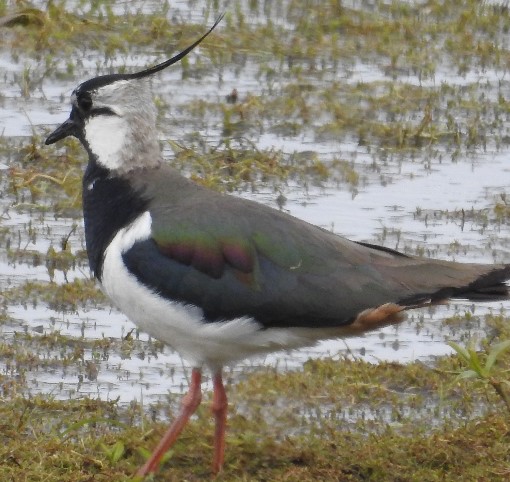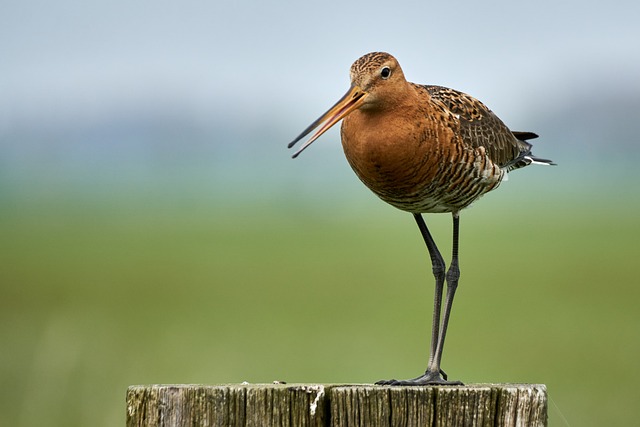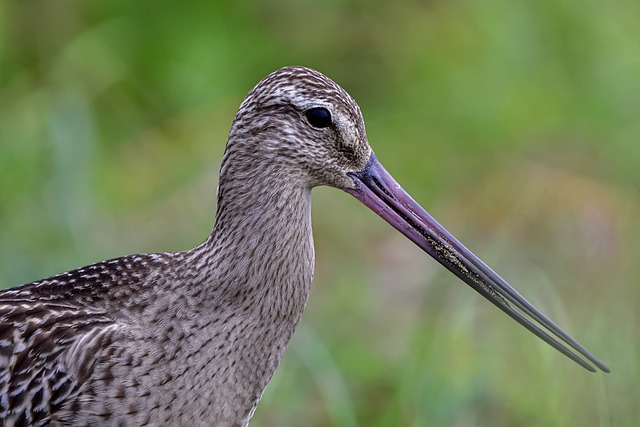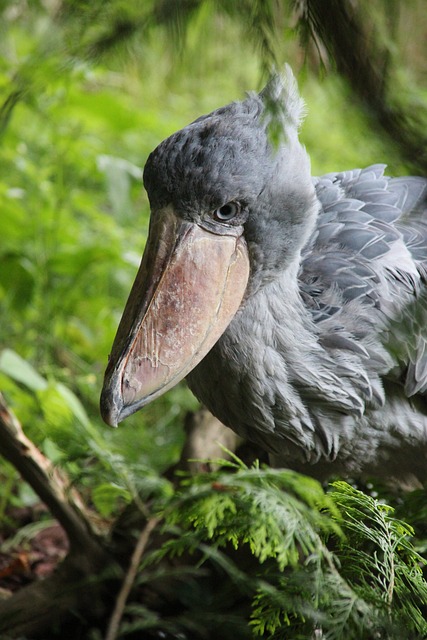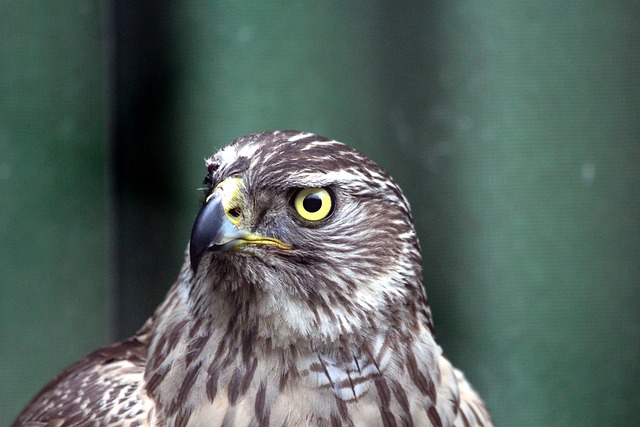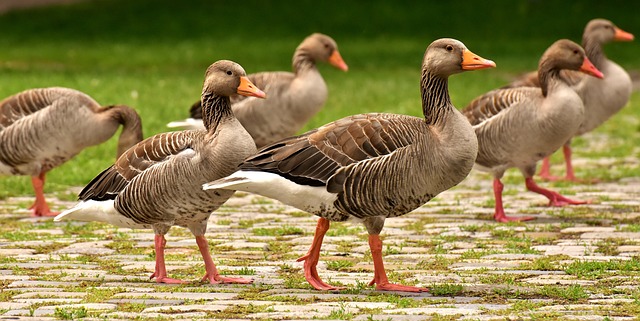The Northern Lapwing, also known as the green plover, is a medium-sized bird that is native to Eurasia and North Africa. It is a distinctive wader, with a crest of white feathers on its head and a white-spotted black mantle.
This bird is well-known for its loud call and is a familiar sight around meadows, fields, and other open areas.
Introduction
The Northern Lapwing is a unique creature that has evolved to thrive in its environment. Its impressive adaptation to its habitat and its ability to survive a range of environmental changes have made it an integral part of the natural ecology. This article will provide an overview of the Northern Lapwing, including its physical characteristics, behavior, and habitat.
The Northern Lapwing is a migratory bird that can be seen in parts of Europe, North Africa, and Asia. It is an omnivore, with a diet that consists mostly of invertebrates and cereals. It's long legs and long beak make it well-suited for wading in shallow water and probing in the mud for food.
The Northern Lapwing is a monogamous bird, with a single pair forming a lasting bond and each breeding season. The nest is usually built on the ground, and the female lays two to four eggs. The chicks are able to fly just a few weeks after hatching and can survive on their own.
The conservation status of the Northern Lapwing is threatened by a range of human activities, including habitat destruction, agricultural intensification, and hunting. Fortunately, there are numerous efforts underway to help protect and preserve the species.
In this article, we'll provide a closer look at the Northern Lapwing, including its physical characteristics, behavior, habitat, diet, reproduction, and conservation efforts. By better understanding the Northern Lapwing, we can help ensure its continued survival in its natural habitat.
Habitat
The Northern Lapwing is a species of wader typically found in the temperate and boreal regions of the Northern Hemisphere. This includes North America, Europe, and Asia. The species has a wide range of preferred habitats, including grasslands, plowed fields, wetlands, and coastal areas.
The natural habitat of the Northern Lapwing looks like a mix of open fields, wetlands, and grasslands. They are particularly fond of meadows and grassy habitats, where they can forage for food. They also prefer wetland habitats, such as marshes, shallow lakes, and coastal areas. They often inhabit coastal salt marshes, as well as mudflats and other coastal habitats. In the winter, they can be found in more desolate areas, such as sandbanks and open plowed fields.
The Northern Lapwing is an adaptable species, and they are able to quickly adjust to changing habitats. This makes them well-suited to areas that undergo rapid changes due to human development. They can quickly adjust to their new environment and take advantage of new resources, such as food sources and nesting sites.
The Northern Lapwing is quite mobile, and they are able to switch habitats when food or nesting sites become scarce. They are also capable of migrating over long distances, and they can travel up to 2,000 kilometers in a single journey. This makes them well-suited to areas with rapidly changing weather patterns.
The Northern Lapwing is also known to migrate between boreal and temperate regions, as well as between different areas within the same region. This enables them to take advantage of more favorable conditions, such as more abundant food resources.
The Northern Lapwing is an important species for conservation, as they are a crucial part of the ecosystem in many areas. They are particularly important in wetland habitats, as they help to control insect populations and provide valuable organic matter to the soil. They also maintain grassland habitats, providing food and nesting sites for other species of birds.
Diet
The Northern Lapwing is an omnivorous species, which means it eats both plants and animals. Its diet mainly consists of insects, spiders, snails, small amphibians, and earthworms. It will also eat seeds, grain, berries, and other plant-based foods.
The Northern Lapwing hunts for its food on land, usually in open fields where it has plenty of space to spot its prey. Its hunting technique involves walking or running and then suddenly stopping to catch its prey with its beak. It takes advantage of the element of surprise, as this technique often catches the prey off-guard. This technique also keeps the Northern Lapwing safe from any predators that may try to catch it whilst it’s in pursuit of its meal.
The Northern Lapwing’s beak is well adapted to its diet. It is short and almost triangular-shaped, which allows the bird to dig into the ground for food. The beak also curves downwards at the end, which gives the Northern Lapwing the ability to catch its prey and hold it tightly.
The Northern Lapwing will also use its beak to probe the soil for food. It will peck the soil multiple times to make sure it has found any food that might be hiding in the ground. This pecking motion also helps to stir up the soil and expose food sources that may be hidden.
The Northern Lapwing will also eat carrion, which is the decaying flesh of dead animals. This is a good food source since it is often rich in nutrients and easy to find.
The Northern Lapwing will also scavenge for food, which means it will look for food that other animals have discarded. This is an important behavior, as it helps to keep the environment clean by reducing the amount of rotting food that might attract disease.
Overall, the Northern Lapwing is an omnivorous species that hunts on land for its food. Its beak is well adapted for probing and catching its prey. In addition, the Northern Lapwing will also eat carrion and scavenge for food. This diet helps to maintain a healthy ecosystem and keep the environment clean.
Reproduction
The northern lapwing is a monogamous bird, which means that it usually mates for life. During mating season the male northern lapwing will perform courtship displays for the female. The male will display his plumage and make loud, distinctive calls throughout the process.
Once a pair is established, they will construct a nest together. The nest is usually a shallow scrape in the ground, lined with vegetation and leaves. The female will typically lay a clutch of 4-5 eggs, and both parents will take care of the eggs until they hatch. The eggs usually take around three weeks to hatch.
Once the chicks hatch, both parents will take turns to look after them. The chicks are born with downy feathers and are able to walk and move around almost immediately. The parents will stay close to their chicks and will lead them to foraging areas to feed. The chicks will remain with their parents for about a month before they are ready to leave the nest and become independent.
The northern lapwing is a very protective parent. It will aggressively defend its chicks from predators including cats, rats, foxes, and birds of prey. It has been known to mob predators, dive-bomb them, and make loud calls.
The northern lapwing is also a very social bird. It usually forms small flocks with other lapwings and will defend its flock from predators. The flock also provides protection for the chicks, as the parents can take turns foraging and looking after the chicks while the other adults keep watch.
The northern lapwing is a long-lived bird, with a lifespan of up to 20 years. It is an important part of the ecosystem, as it helps to keep insect populations in check. It is also a key member of the food chain, providing sustenance to predators such as foxes, birds of prey, and owls.
Conservation and Preservation
The conservation and preservation of the Northern Lapwing is of utmost importance due to the species' current status. The Northern Lapwing is a species of special concern in the United Kingdom and is on the Amber List of Birds of Conservation Concern. Additionally, the International Union for Conservation of Nature has classified the Northern Lapwing as a species of least concern.
Despite its classification, the Northern Lapwing faces several threats that endanger its population. The most significant threats come in the form of habitat destruction. Common agricultural practices such as plowing, draining, and land reclamation are all activities that can reduce the available habitat for the Northern Lapwing.
Furthermore, the Northern Lapwing is increasingly threatened by predation. Several species of predatory birds, such as the Eurasian Sparrowhawk and the Common Buzzard, hunt the Northern Lapwing and can reduce the population of the species.
In an effort to preserve the Northern Lapwing, several conservation initiatives have been put into place. In the United Kingdom, the Royal Society for the Protection of Birds has implemented a “Lapwing Project” to monitor the species' population and to promote better protection of its nesting grounds. Additionally, numerous National Nature Reserves in the United Kingdom serve as protected areas for the species to live and breed in peace.
Finally, the General License Agreement of the European Union provides some protection for the Northern Lapwing by prohibiting certain activities which could harm the species, such as hunting or destruction of its habitat.
Conclusion
The northern lapwing is a unique bird that has adapted to its environment in many ways. It has a distinct appearance and behavior that make it stand out among other birds. Furthermore, the northern lapwing plays an important role in the ecosystem, as it helps to keep the insect population under control. The current population of northern lapwings is declining and efforts are being made to preserve them.
The northern lapwing is an attractive and unique species of wading bird that is found in many parts of Europe and Asia. Its plumage is black and white with a yellow-green eye ring. The northern lapwing also has a distinctive call that is used to communicate with other birds. It feeds mainly on insects, which it captures with its sharp beak.
The northern lapwing breeds in the spring and summer months and builds its nest on the ground. The nest is a small, shallow depression lined with grass and other vegetation. The female will lay two or three eggs, which are incubated by both the male and female. Once the chicks hatch, both parents will help to feed and protect them until they are ready to fly.
Unfortunately, the northern lapwing population is currently declining due to a number of factors. One of the main threats is the destruction of their natural habitat, which is caused by human activities such as farming and development. Other threats include predation, climate change, and hunting. As a result, the northern lapwing is now listed as a threatened species in many parts of Europe and Asia.
Video
